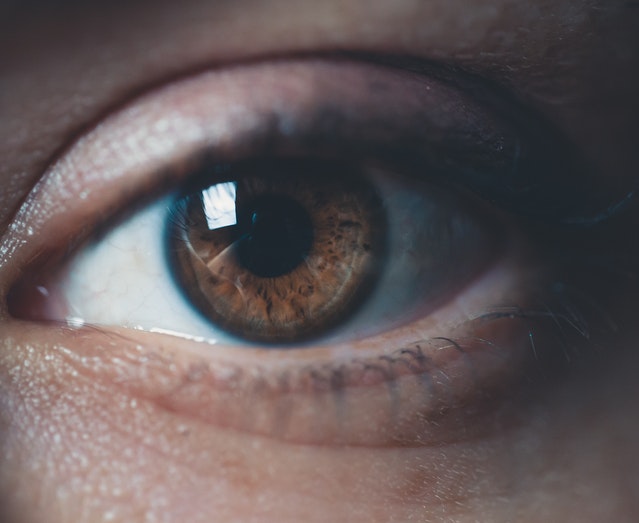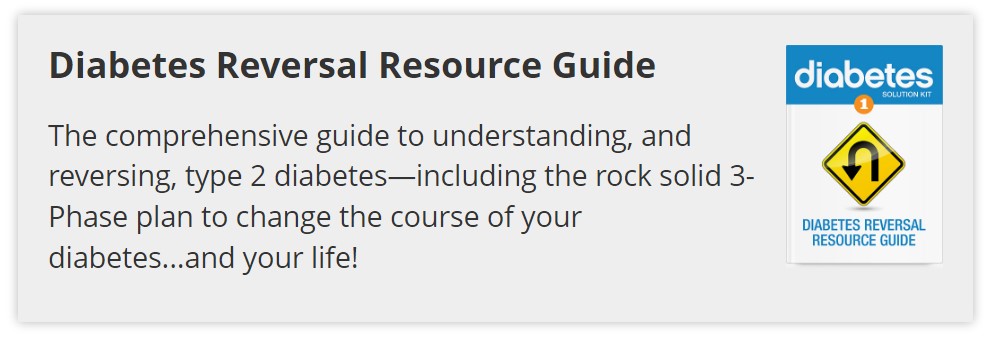If you're diabetic and have low blood sugar, you're probably wondering about the possible effects of your condition on your eyes.
In this article, we'll discuss:
- The effects of diabetes on the eyes
- The signs and symptoms of eye damage in diabetics (also known as diabetic retinopathy)
- And the possible treatments for any eye damage that may occur
We hope this information will help you to better understand your eye health and protect it against the possible risks of diabetes.
Eye damage in diabetics
Diabetics are at a higher risk for eye damage, and for good reason. This includes diabetic retinopathy, one of the most common causes of blindness in diabetics. Sufferers may also experience cataracts, glaucoma, and optic nerve problems.
Diabetics are also at a higher risk for eye damage because of the high blood sugar levels they endure. If youre diabetic, its important to be proactive about protecting your vision. There are several ways you can do this, such as wearing glasses, using medications correctly, and getting regular checkups from your doctor.
Diabetic retinopathy, diabetic macular edema and related vision loss are the three most common causes of blindness in people with diabetes. It is estimated that about 5 million Americans have visual impairment caused by these diseases.
Being aware of the dangers of diabetic eye damage is the first step in protecting your vision. Let's first take a look at diabetic retinopathy.
Diabetic Retinopathy
Diabetic retinopathy is a major health concern for diabetics. It can lead to vision loss, which may require surgery and even blindness if left untreated. Retinopathy is an eye disease that develops over time in people with diabetes as they age.
With diabetic retinopathy, the blood vessels of the retina become damaged. It usually affects both eyes, but only one eye may be affected at any given time. The disease occurs when the body does not produce enough insulin or glucose to regulate blood sugar levels as it should be done due to diabetes mellitus (DM).
The progression of diabetic retinopathy is one of the most common causes for blindness among diabetics, especially among those who are also obese or have an associated condition such as hypertension or cardiovascular disease.
Diabetic Macular Edema
Diabetic edema is one of the major problems faced by diabetics. This condition can lead to vision loss and also affect other organs in the body like kidneys, heart and nerves.
Diabetic macular edema occurs when there is a buildup of fluid around your retina (the part that senses light). It occurs due to blockage or leakage in your blood vessels which results in swelling under the retina, leading to damage over time.
The most common cause of edema is an increased amount of salt in the body. It may also be caused by a decrease in potassium, high blood pressure or diabetes. In addition to affecting your vision, edema increases the risk for other eye diseases like glaucoma, cataracts and retinal detachment.
How long does it take for diabetes to damage your eyes?
It can vary greatly from person to person. However, experts believe that diabetes can gradually damage your eyes over time. In some cases, patients may notice vision changes starting as early as the early stages of the disease. Further deterioration may occur if left untreated, which could lead to complete blindness.
Can low blood sugar damage the eyes?
Low blood sugar can lead to a range of eye problems, including blindness if not treated immediately. A doctor will be able to determine the cause of the low blood sugar and recommend the best course of action. If left untreated, diabetes can damage the small blood vessels in your eyes and cause them to hemorrhage, leading to vision loss.
What are the signs and symptoms of eye damage in diabetics?
If youre diabetic and experience any of the following symptoms, its important to see a doctor: eye fatigue, blurred vision, eye discomfort or pain, increased sensitivity to light or glare, redness or pus in the eyes.
Monitor the following closley:
Eye fatigue
Keeping your eyes healthy is one of the most important things you can do for your overall health. Not only will you reduce the risk of eye disease, but you will also enjoy better vision and improved vision quality.
There are various ways to reduce eye fatigue - including getting enough sleep, using sunglasses, and drinking enough water. Additionally, make sure to follow the doctors advice about regular eye exams.
Sudden blindness and vision changes
One of the most common signs and symptoms of eye damage in diabetics is sudden blindness.
Although blindness in diabetes can be a devastating experience, the good news is that there are many treatments available that can help restore vision. If diagnosed early enough, treatment with glasses or surgery may be able to prevent permanent vision loss.
Dryness of the eyes
A common cause of eye damage in diabetics is dryness, which can be a result of various factors such as poor blood circulation, diabetes itself, or eye disease.
Treatment usually involves prescription eye drops or surgery, but the best way to avoid damage to your vision is to get it checked out early on.
Swelling of the eye lens
The swelling of the eye lens is one of the common problems that many diabetic people face. It can lead to serious vision loss.
The swelling occurs in both the eyes and causes you severe pain when you blink.
What should you do if you experience any signs or symptoms of eye damage?
If youre anything like most people, you probably take your vision for granted. But did you know that the eye is a very delicate organ? In fact, the eye can be damaged in a variety of ways, and if not treated promptly, the damage can lead to vision loss and other serious consequences.
Thats why its so important to know what signs or symptoms to look for when experiencing any eye damage. If youre worried about your vision, dont wait - see a doctor as soon as possible.
Eye damage is never fun, but knowing the signs and getting the treatment you need as soon as possible can make the difference between a long and painful journey, and a short and manageable one.
How can you prevent or reduce the risk of eye damage in diabetics?
Preventing or reducing the risk of eye damage in diabetics is essential. One of the biggest risk factors is eye damage caused by diabetes.
In some cases, eye damage can be the result of high blood sugar levels, poor eating habits, or even injuries. If you experience an eye emergency, immediately seek medical attention so you can start the treatment right away.
There are several ways to reduce or prevent this, and the more you know, the better off youll be.
Make sure you get regular eye exams and wear sunglasses when outdoors in direct sunlight. Additionally, try to avoid contact lenses if possible. If you do wear them, be sure to use the appropriate type and size for your eye.
Prevention is key - keep your blood sugar under control by following a healthy diet and exercising regularly, and avoid injuring your eyes with activities like gardening or sports.
Be aware of the warning signs of diabetic retinopathy and take action to treat it quickly!
Ways to prevent or reduce the effects of low blood sugar on the eyes
If youre diabetic, your eyes are at high risk of eye damage. Keeping your blood sugar level in check is the best way to prevent this from happening.
Here are some simple tips that will help you achieve this:
- Follow a healthy diet that includes plenty of fruits and vegetables.
- Exercise regularly to keep your body insulin-sensitive and reduce the risk of developing diabetes or other related health problems.
- Always check blood sugar levels regularly, and treat any hypoglycemia immediately with glucomannan tablets or sugar-free candy.
- Wear sunglasses when outdoors in bright sunlight to protect your eyes from the harmful UV rays.
- Drink plenty of fluids (especially water) throughout the day to avoid dehydration, which can cause eye problems like cataracts and retinopathy.
- Get regular eye exams.
Treatment for any eye damage caused by diabetes
If you have diabetes, the chances of suffering from eye complications are high. These complications can lead to decreased vision.
By treating your eyes early on, youll reduce the chances of further damage and improve your overall vision. There are many treatments available, and your doctor will recommend one that is best for you.
Options may include eye surgery to remove scar tissue and blood from they eye; eye injections to address maculopahty that is hindering vision; and laser treatment for the growth of new blood vessels at the back of the eye.
Does blurry vision from diabetes go away?
Some people may experience a gradual improvement in their vision over time with proper blood sugar regulation. Others, meanwhle, may experience a more sudden deterioration that may never get better. Taking proper care of your eyes and health per doctor orders can go a long way in enhancing your sight.
Can vision loss from diabetes be restored?
Vision loss from diabetes can vary significantly from person to person. However, there are a number of ways that you can increase your chances of recovering some or all of your vision despite the condition.
Work with a specialist who can help you develop an individualized treatment plan. Additionally, keep track of your blood sugar levels and take regular breaks during meals and while working to avoid extended periods without food. You may also consider taking supplements that control blood sugar.
Follow up care after treatment for diabetic eye damage
It is important to follow up with your eye doctor after you have been treated for the condition. Make sure to schedule regular check-ups and bring any new changes in your vision to their attention. Always use protective eyewear when doing activities that could cause eye injury, like playing sports or working on a computer screen all day long.
Frequently Asked Questions
Here are a handful of common questions (and answers to them) that we hear about diabetes vision issues.
What are the steps to prevent diabetic eye disease?
The American Diabetes Association recommends the following steps to prevent diabetic eye disease:
1) Keep blood sugar levels within the normal range.
2) Maintain good vision with regular eye exams.
3) Avoid smoking, which can increase the risk of diabetic eye disease.
4) Avoid exposure to ultraviolet (UV) radiation, which can cause damage to the retina.
What are the warning signs of diabetic eye disease?
The American Diabetes Association outlines the warning signs of diabetic eye disease in their website, diabetes.org. They include:
- Increasing eye pressure
- Vision problems, such as blurred vision and blindness
- Eye redness or swelling
- Loss of vision in one eye
How can I reduce my risk of diabetic eye disease?
There is no one-size-fits-all answer to this question, as the best way to reduce your risk of diabetic eye disease may vary depending on your individual lifestyle and health condition. However, some tips on reducing your risk of diabetic eye disease include regularly monitoring blood sugar levels and exercising regularly.
What are the treatments for diabetic eye disease?
Diabetic eye disease can be treated with the use of eyeglasses, contact lenses, or surgery.
What are the dangers of diabetic eye disease?
Diabetic eye disease (DED) is the leading cause of blindness in adults in the United States. It can often be a slow and gradual process, but complications from DED can occur at any time. Risk factors for DED include high blood sugar levels, obesity, and age over 40. The source of information for the above facts and figures is the National Library of Medicine.
Bottom Line
Diabetics are more prone to eye damage due to their high blood pressure and cholesterol levels. Its essential to get regular check-ups for your eyes as diabetic retinopathy can progress rapidly without early detection.
By knowing the effects of diabetes on the eyes and the various treatments available, you can take the necessary steps to protect your vision.




